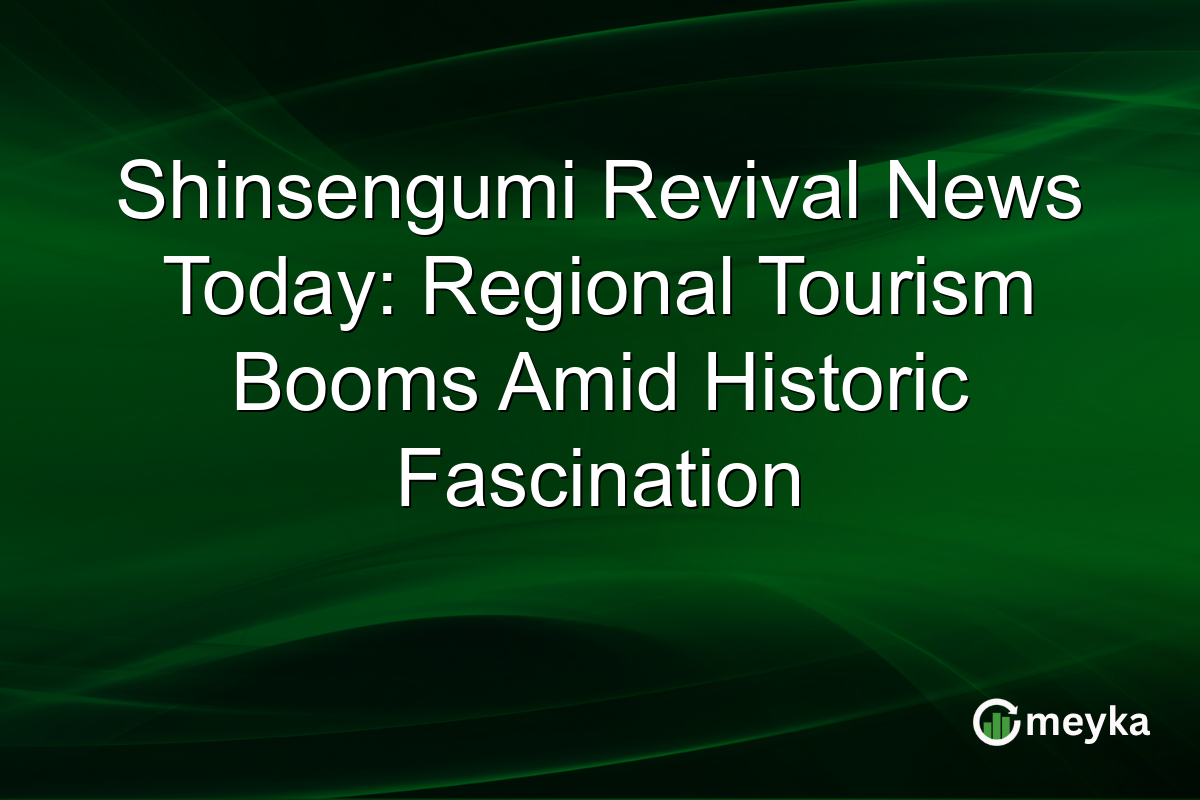Shinsengumi Revival News Today: Regional Tourism Booms Amid Historic Fascination
Shinsengumi, the historic samurai police known from Japan’s late Edo period, are experiencing a renaissance. This resurgence isn’t just about nostalgia; it’s reshaping Japan’s tourism and economy. With new museum exhibits, TV dramas, and local initiatives highlighting Shinsengumi heritage sites, there’s a growing interest in Japan samurai tourism. This revival significantly impacts local business growth, evident in rising visitor numbers and increased economic activity.
Shinsengumi Economic Impact
The Shinsengumi are an iconic part of Japan’s history, known for their strict code and role during turbulent times. Recently, they’ve become more than just historical figures. Their pop culture rise has injected life into regional tourism. Museums featuring Shinsengumi artifacts are seeing increased attendance by 25% over the past year. Tourism-related businesses such as hotels and restaurants around these sites report revenue boosts of up to 30%. This shows the Shinsengumi’s revitalized role as economic catalysts, increasing tourism dollars and supporting local communities.
The Role of Japan Samurai Tourism
Japan samurai tourism is gaining traction, with an emphasis on authenticity and historical depth. The local governments are spearheading campaigns to redesign sites with Shinsengumi history. Tourists are not just viewing exhibits but experiencing samurai culture through interactive activities. This immersive approach attracts more international visitors, contributing significantly to local economies. For these areas, tourism based on historical pop culture Japan trends offers a sustainable growth path, nurturing small businesses and cultural preservation.
Local Business Growth Through Historical Pop Culture
Local businesses are key beneficiaries of the Shinsengumi’s newfound fame. In regions where Shinsengumi history is prevalent, small shops and artisan crafts are seeing a surge in demand. As the focus on historical pop culture Japan intensifies, community-driven projects are receiving attention. Pop-up markets and themed tours are frequent, promoting local art and products. This community involvement provides economic stability and revitalizes interest in regional cultures, proving that the past can indeed fuel the future.
Final Thoughts
The Shinsengumi revival is a powerful demonstration of how historical figures can influence modern economies. By leveraging Japan samurai tourism, regions benefit from cultural tourism’s economic impact. As interest in the Shinsengumi grows, local businesses have opportunities to thrive. This movement not only stimulates economic activity but also preserves important cultural narratives. For local economies, embracing historical pop culture might be the key to sustainable growth and continued engagement with heritage sites. Looking forward, this trend may inspire other regions to look into their historical roots for similar economic upliftment.
FAQs
The Shinsengumi’s rise in popularity boosts local economies significantly. Regions with Shinsengumi sites report increases in tourism, driving revenue growth for businesses like hotels and restaurants.
Japan samurai tourism draws both domestic and international visitors into areas rich in historical significance. This boosts local business by increasing demand for services and cultural experiences, aiding economic growth.
Yes, businesses are benefiting greatly. The Shinsengumi’s revival leads to increased sales for local crafts and services, as tourists seek unique, culturally rich experiences. This trend supports both economy and cultural preservation.
Disclaimer:
This is for information only, not financial advice. Always do your research.






